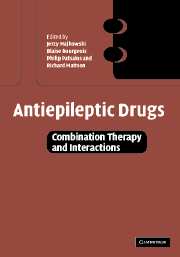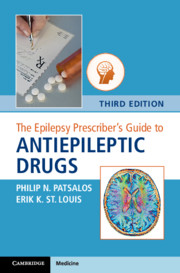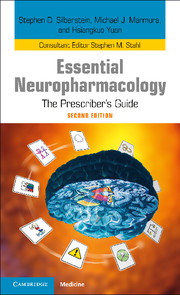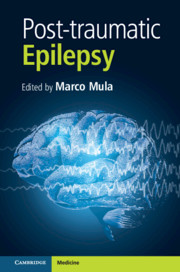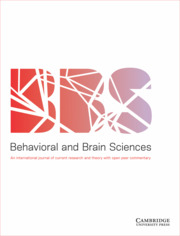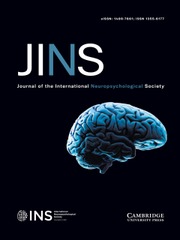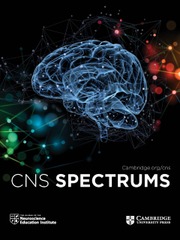Antiepileptic Drugs
This book reviews the use of antiepileptic drugs focusing on the interactions between these drugs and between antiepileptics and other drugs. These interactions can be beneficial or can cause harm. The aim of this book is to increase awareness of the possible impact of combination pharmacotherapies. Pharmacokinetic and pharmacodynamic interactions are discussed supported by clinical and experimental data. The book consists of five sections covering the general concepts and advantages of combination therapies, the principles of drug interactions, the mechanisms of interactions, drug interactions in specific populations or in patients with co-morbid health conditions, and concludes with a look at the future directions for this field of research. The book will be of interest to all who prescribe antiepileptics to epileptic and non-epileptic patients, including epileptologists, neurologists, neuro-pediatricians, psychiatrists and general practitioners.
- Covers the benefits and pitfalls of combination therapy
- Describes mechanisms of interactions as well as clinical significance
- Contributions from an international team of authors and editors
Reviews & endorsements
'The book contains a wealth of information both for everyday practice and for more theoretical aspect. Interactions between AED … covered in great detail. … Why is this book so important? The authors explain it in their foreword. As a substantial proportion of patients with epilepsy will not become seizure free with one drug, combination therapy is necessary and therefore often used.' Official Journal of the European Paediatric Neurology Society
Product details
July 2005Hardback
9780521822190
514 pages
254 × 181 × 34 mm
1.19kg
16 b/w illus.
Available
Table of Contents
- 1. Combination therapy of diseases: general concepts Emma Lam and Philip A. Routledge
- 2. Combination therapy with antiepileptic drugs: potential advantages and problems Richard H. Mattson
- 3. Pharmacogenetic aspects M. C. Walker, M. R. Johnson and Philip N. Patsalos
- 4. Pharmacokinetic principles and mechanisms of drug interactions Philip N. Patsalos
- 5. Predictability of metabolic antiepileptic drug interactions Edoardo Spina, Emilio Perucca and Rene Levy
- 6. Influence of food and drugs on the bioavailability of antiepileptic drugs C. A. Fontes Ribeiro
- 7. Interactions between antiepileptic drugs Bernhard Rambeck and Theodor W. May
- 8. Interactions between antiepileptic and non-antiepileptic drugs Jerzy Majkowski and Philip N. Patsalos
- 9. Pharmacodynamic principles and mechanisms of drug interactions Blaise F. D. Bourgeois
- 10. Methods for assessing pharmacodynamic interactions Blaise F. D. Bourgeois
- 11. Experimental studies of pharmacodynamic interactions Stanislaw J. Czuczwar
- 12. Clinical studies of pharmacodynamic interactions John R. Pollard and Jacqueline French
- 13. Clinical studies of pharmacodynamic interactions between antiepileptic agents and other drugs Gaetano Zaccara, Andrea Messori and Massimo Cincotta
- 14. Antiepileptic drug interactions in children Olivier Dulac, Elizabeth Rey and Catherine Chiron
- 15. Antiepileptic drug interactions in the elderly James C. Cloyd and Jeannine M. Conway
- 16. Antiepileptic drug interactions in pregnancy Mark S. Yerby
- 17. Antiepileptic drug interactions in handicapped and mentally retarded patients Matti Sillanpaa
- 18. Antiepileptic drugs and sex steroids Richard H. Mattson
- 19. Antiepileptic drug interactions in patients requiring psychiatric drug treatment Michael R. Trimble and Marco Mula
- 20. Antiepileptic drugs in non-epileptic health conditions - possible interactions Jerzy Majkowski
- 21. Drug monitoring in combination therapy W. Froscher
- 22. Cognitive side-effects due to antiepileptic drug combinations and interactions Albert P. Aldenkamp, Mark de Krom, I. Kotsopoulos and Jan Vermeulen
- 23. Selection of drug combinations in clinical practice - current and future perspectives Jerzy Majkowski
- 24. Future research - an experimental perspective R. A. Voskuyl, D. M. Jonker and R. H. Lopes da Silva
- 25. Future research - a clinical perspective C. A. Fontes Ribeiro.

